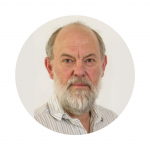Recognizing Plant Physiology first authors: Viviana Andrea Correa Galvis
Viviana Andrea Correa Galvis, first author of Photosynthesis in Arabidopsis thaliana is unaffected by the function of the vacuolar K+ channel TPK3
Current Position: Post-doctoral researcher at the Max Planck Institute for Molecular Plant Physiology, Germany
Education: PhD in Plant Biology, Heinrich Heine University Düsseldorf (HHU), Germany; M.Sc. in Biology, HHU; BSc. In Biology, National University of Colombia
Non- Scientific Interests: Playing drums, literature, modern art, and any activity that includes being in the wilderness
Brief Bio: My interest in plant science started early on as an undergrad where I worked mainly in ecophysiology learning to understand plant responses to abiotic stresses in Andean trees and Oil Palm cultivars. After finishing my bachelor degree, I continued working as a researcher assistant in the Colombian Oil Palm Research Center, working on drought stress responses and systemic acquired resistance in oil palm cultivars. Later on, I decided to go beyond the leaf surface and moved to HHU where, as a Master and graduate student, I worked on depicting the protein interactions required for the development of plant responses to excess light, specifically non-photochemical quenching in A. thaliana and C. reinhardtii. Later on, I joined the Max Planck Institute as a Post-Doctoral researcher where I have been working since 2016. Currently my research focus relays on depicting the mechanisms that allow plants to adjust light capture and use under light fluctuations. My main aim is to generate a holistic understanding on how plants can adjust the photosynthetic machinery to light fluctuations, thus building bridges and filling the gaps between our knowledge under laboratory conditions and what happens in nature.




